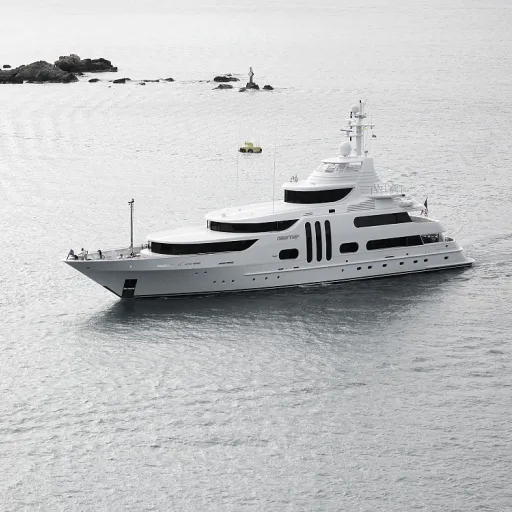-large-teaser.webp)
Understanding the dynamics of sailing teamwork
The foundation of effective crew collaboration
Every successful sailing team knows that the real magic happens when a group of individuals transforms into a cohesive crew. Whether you are racing in the America’s Cup, joining a corporate sailing event, or enjoying a fun building activity with friends, the dynamics of teamwork on a boat are unique. The boat itself becomes a microcosm where communication, problem solving, and leadership skills are constantly tested.
On the water, each crew member has a specific role, but the ultimate team goal is always the same: to sail efficiently and safely, and, if it’s a race, to win. This requires seamless teamwork communication, quick decision making, and the ability to adapt to changing conditions. The experience of working together on a yacht is unlike any other team building event or business challenge. The stakes are real, and the feedback is immediate—if the sails aren’t trimmed right or the crew isn’t in sync, the boat simply won’t perform.
- Smaller groups on a boat mean every team member’s contribution is visible and essential.
- Problem solving happens in real time, often under pressure.
- Leadership skills are distributed, with different crew members stepping up as the situation demands.
Building this level of trust and efficiency doesn’t happen overnight. It takes time, shared experience, and often, a bit of trial and error. Many corporate teams use sailing as a building activity because it mirrors the challenges faced in business: aligning diverse skills, communicating clearly, and working towards a common goal. The lessons learned on deck can translate directly to the boardroom or any high-stakes environment.
For those interested in exploring how different teams approach these challenges, discovering the world of yacht charters and racing events can offer valuable insights into the ultimate team experience. Whether it’s the thrill of an island race or the camaraderie of a building sailing event, the dynamics of sailing teamwork are a masterclass in collaboration and success.
Communication: the backbone of successful crews
Clear Signals, Stronger Teams
Communication is the backbone of any successful sailing team. On a boat, every crew member must work in sync, whether adjusting sails, making quick decisions, or responding to sudden changes. The difference between a smooth tack and a tangled mess often comes down to how well the team communicates. In yacht racing, such as the America Cup or the Island Race, clear instructions and feedback are essential. A single misunderstood call can cost precious time or even jeopardize safety. This is why many corporate sailing events and team building activities focus on developing communication skills. These experiences highlight how teamwork communication directly impacts the boat’s performance and the crew’s overall success.- Effective communication ensures every team member knows their role and the goal at hand.
- It helps smaller groups within the crew coordinate maneuvers, especially during high-pressure moments.
- Problem solving becomes more efficient when everyone shares information openly and quickly.
Adapting to changing conditions together
Reacting as One: The Challenge of Changing Conditions
On the water, no two moments are ever the same. The wind shifts, the sea state evolves, and the competition never stands still. For a sailing team, adapting together is not just a skill—it's a necessity for success. Whether you’re racing in the America Cup or enjoying a corporate sailing experience, the ability to respond as a unified crew is what separates the ultimate team from the rest.
Every crew member must be ready to adjust sails, trim lines, and shift weight at a moment’s notice. This level of teamwork communication is built through experience, trust, and a shared goal. When conditions change, it’s not just about individual skills, but how well the team works as a single unit. Smaller groups on the boat may handle specific tasks, but their actions must be perfectly synchronized with the rest of the crew.
- Problem solving in real time: Quick decisions are made under pressure, often with limited information. The crew’s ability to adapt depends on clear communication and mutual understanding.
- Team building activities: Off-water training and building events help develop the trust and leadership skills needed to handle unpredictable situations during a race.
- Fun and learning: Even in challenging moments, the shared experience of overcoming obstacles together adds to the fun and builds lasting bonds among team members.
For those interested in building their own sailing team or enhancing their business with a team building sailing activity, understanding how to adapt as a group is crucial. The lessons learned on the water translate directly to the corporate world, where teamwork, communication, and decision making are equally vital. If you’re looking to improve your crew’s performance or explore the best options for your next sailing experience, check out this guide for yacht enthusiasts for practical insights.
Leadership and decision-making under pressure
Staying Calm and Focused When the Pressure Mounts
On the water, every sailing team faces moments when quick decisions can make or break a race. Whether it’s a sudden wind shift during the Island Race or a tactical move in the America’s Cup, the ability to lead and make decisions under pressure is a defining factor for success. Leadership skills in sailing aren’t just about giving orders. It’s about guiding the crew, building trust, and ensuring every team member feels confident in their role. A good leader listens to input from the crew, weighs options fast, and communicates the chosen course of action clearly. This teamwork communication is essential, especially when the boat is moving at speed and conditions are changing by the minute.- Clear roles: Each crew member must know their responsibilities, from trimming sails to navigation. This clarity helps the team work as a single unit, even in high-stress situations.
- Problem solving: When unexpected challenges arise, smaller groups within the crew often tackle specific issues, reporting back to the skipper. This decentralized approach speeds up decision making and keeps the boat moving efficiently.
- Learning from experience: Teams that regularly participate in building activities or corporate sailing events often develop stronger leadership and decision-making skills. These experiences translate directly to better performance during a race.
Training and building cohesion off the water
Strengthening Bonds Beyond the Deck
Building a high-performing sailing team doesn’t end when the boat docks. In fact, some of the most valuable teamwork communication and problem solving skills are forged off the water. Whether preparing for a major race like the America’s Cup or a local island race, successful crews invest time in structured team building activities and informal gatherings alike. Corporate sailing events and dedicated team building sailing experiences have become popular ways to enhance cohesion. These building activities allow crew members to practice leadership skills, decision making, and communication in smaller groups, simulating real race scenarios without the pressure of competition. The ultimate team is not just about technical sailing skills, but about how well team members trust and support each other when challenges arise.- Regular debriefs after training sessions help identify strengths and areas for improvement, fostering a culture of open feedback.
- Team building events, such as onshore workshops or fun regattas, encourage bonding and create shared memories that translate into better teamwork on the boat.
- Corporate sailing programs often blend business goals with sailing experience, showing how lessons from the water can drive success in the workplace.
Lessons learned from real-life yacht racing teams
Insights from the World’s Most Competitive Races
When looking at the America’s Cup or the Island Race, the stories behind the scenes reveal how sailing teamwork is the ultimate team building activity. These events are not just about speed or the latest sails. They are about how each crew member brings unique skills and experience to the boat, and how communication and decision making under pressure can make or break a race.What Top Crews Teach Us About Teamwork
Successful sailing teams highlight a few key lessons:- Clear roles and trust: Each team member knows their job, but also trusts others to do theirs. This trust is built over time, both on and off the water, through regular team building activities and shared sailing experiences.
- Adaptability: During a race, conditions change fast. The best crews adapt quickly, using strong teamwork communication to adjust sails, redistribute weight, or change tactics. This flexibility is a skill that translates well to business and corporate environments.
- Leadership under pressure: Leaders in yacht racing are not just giving orders. They listen, encourage input from smaller groups within the crew, and make tough calls when needed. This kind of leadership skills development is a core benefit of any sailing team building event.
- Problem solving together: Whether it’s a sudden wind shift or a technical issue with the boat, the crew must work as one. Real-life races show that the most successful teams are those that can solve problems quickly and calmly, often turning setbacks into opportunities for success.













